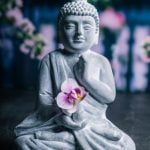Feng Shui about houses is an ancient Chinese practice that focuses on the balance and harmony of energy flow within a space to promote well-being and prosperity. Understanding the basics of Feng Shui is essential in creating a harmonious environment in your home. By aligning the elements of water, wood, fire, earth, and metal, you can enhance the energy flow or Chi in your living space.
The history and origins of Feng Shui date back thousands of years, originating from ancient China. This philosophy believes that the placement of objects and design elements can influence our lives positively or negatively. As such, applying Feng Shui principles to your home involves careful consideration of layout, colors, furniture placement, and even the external environment surrounding your house.
In this article, we will delve deeper into how you can incorporate Feng Shui principles into your home decor. From choosing the right colors for each room to understanding the significance of furniture placement, we will guide you through creating a balanced and harmonious living space. Stay tuned as we explore how plants, natural elements, decluttering techniques, and personalized practices can help bring positive energy into your home.
The History and Origins of Feng Shui
Feng Shui has a rich history that dates back thousands of years, originating in ancient China. The term “Feng Shui” translates to “wind-water” and is based on the belief that the arrangement and alignment of objects in a space can affect the flow of energy, known as “chi.” This energy is thought to influence one’s health, wealth, and overall well-being.
The practice of Feng Shui is deeply rooted in Chinese philosophy, particularly the concept of yin and yang, which symbolize balance and harmony. It also draws from the principles of the five elements – wood, fire, earth, metal, and water – each representing different aspects of life. By understanding these elements and their interactions, practitioners of Feng Shui can create environments that support and nourish individuals within them.
Over time, Feng Shui has evolved into various schools or approaches, each with its unique techniques and practices. Classical Feng Shui focuses on analyzing the external environment surrounding a home or building to determine how it impacts the internal energy flow.
Black Hat Sect Feng Shui incorporates elements of Western interior design principles to create spaces that align with individual intentions and goals. Understanding the origins of Feng Shui can provide essential insights into its core principles and empower individuals to apply them effectively in their homes for optimal balance and well-being.
| History Facts | Key Points |
|---|---|
| Feng Shui Origins | Originated in ancient China; based on “wind-water” principles |
| Philosophical Roots | Built upon yin-yang concept and five elements theory |
| Schools of Thought | Classical vs. Black Hat Sect approaches to Feng Shui |
Applying Feng Shui Principles to Your Home
Feng Shui is a practice that involves arranging your living space in a way that promotes positive energy flow and harmony. When it comes to applying Feng Shui principles to your home, there are several key concepts to keep in mind.
One of the fundamental principles is the Bagua map, which divides your space into nine areas corresponding to different aspects of life such as wealth, relationships, and health. By using the Bagua map, you can determine which areas of your home need attention and how to enhance them using Feng Shui techniques.
To effectively apply Feng Shui in your home, it is crucial to declutter and organize your space. Clutter not only creates physical obstacles but also blocks the flow of energy or chi in your environment. Start by addressing areas that tend to accumulate clutter, such as closets, cabinets, and storage rooms. Use the KonMari method or other organizational strategies to streamline your belongings and create a more harmonious atmosphere in your home.
In addition to decluttering, choosing appropriate décor and furniture placement is essential for creating a balanced environment according to Feng Shui principles. Consider incorporating elements such as mirrors to reflect light and expand space, as well as incorporating natural materials like wood and stone for grounding energy.
Pay attention to the layout of each room and aim for a balance between yin (calm) and yang (active) energies in different areas of your home. By implementing these practices, you can create a space that not only looks appealing but also supports positive energy flow according to feng shui about house principles.
- Utilize the Bagua map to identify key areas for improvement
- Declutter and organize your space to promote positive energy flow
- Choose décor and furniture placement that aligns with Feng Shui principles
Choosing the Right Colors for Each Room
In feng shui, specific colors are associated with the five elements: wood, fire, earth, metal, and water. Each element corresponds to certain areas of life and has its own set of related colors.
For example, green and brown represent the wood element and are ideal for promoting growth and vitality in spaces like the living room or office. On the other hand, red and orange belong to the fire element and are recommended for areas where energy and passion are desired, such as the dining room or kitchen.
It’s essential to consider the function of each room when choosing colors based on feng shui principles. Bedrooms should feature calming hues like soft blues or gentle greens to promote relaxation and restful sleep. Home offices can benefit from stimulating colors like yellow or beige to enhance focus and productivity. By selecting colors that align with the purpose of each room according to feng shui principles, you can create a harmonious environment that supports your goals and well-being.
| Colors | Associated Element |
|---|---|
| Green | Wood |
| Red | Fire |
| Blue | Water |
The Importance of Furniture Placement in Feng Shui
Feng shui places a significant emphasis on the arrangement of furniture within a space, as it directly impacts the flow of energy, or chi. The way in which furniture is placed can either promote positive energy and harmony or disrupt the balance within a home. In feng shui, each piece of furniture serves a specific purpose and must be positioned thoughtfully to optimize the flow of positive chi throughout the space.
One essential principle of feng shui furniture placement is the concept of creating a clear pathway for energy to flow smoothly throughout the room. This involves arranging furniture in a way that allows for easy movement and avoids blocking natural pathways. For example, large pieces of furniture should not obstruct doorways or windows, as this can disrupt the natural flow of energy. By keeping pathways clear and open, you can ensure that chi can circulate freely throughout your home.
Another key aspect of furniture placement in feng shui is to create balance and harmony within each room. This includes ensuring that there is an equal distribution of visual weight among different furniture pieces.
For instance, if one side of the room feels heavy with larger items, you may need to add lighter elements to create equilibrium. By achieving a sense of balance in your furniture arrangement, you can promote a more harmonious atmosphere within your home-a foundational principle of feng shui about house practice.
Using Plants and Natural Elements to Enhance Energy Flow
Plants and natural elements play a vital role in enhancing the flow of energy, also known as chi, within your home when it comes to feng shui about house. In feng shui practice, plants are believed to bring vitality, freshness, and positive energy into a space.
They are not only aesthetically pleasing but also contribute to purifying the air and creating a harmonious environment. When selecting plants for your home, consider choosing ones with rounded leaves as they are believed to attract positive energy and symbolize money.
Incorporating natural elements such as wood, stone, water, and metal can also help balance the energy in your home. Wood represents growth and vitality, making it an excellent choice for furniture or decor pieces. Stones can ground the energy in a space and promote stability, while water features like fountains or aquariums can invite abundance and tranquility into your home. Metal items such as wind chimes or metal artwork can help activate clarity and focus.
To enhance the flow of positive energy throughout your home, consider placing plants strategically in areas that need a boost of chi. For example, placing green leafy plants in the wealth area (southeast) can help attract prosperity and abundance.
In the relationship area (southwest), consider adding flowering plants to enhance romantic energies. It’s essential to regularly care for your plants by watering them, trimming dead leaves, and ensuring they receive enough sunlight to maintain their vitality and positive effects on your living space.
Clearing Clutter and Organizing Your Space
Clutter in the home can disrupt the flow of energy, or chi, according to Feng Shui principles. It is essential to declutter and maintain an organized space to promote harmony and balance in your living environment. Here are some tips on how to effectively clear clutter and organize your home:
- Start with one area at a time: Tackling the entire house can feel overwhelming, so it’s best to start small. Begin with one room or even just one corner to prevent feeling stressed.
- Use the “keep, donate, toss” method: As you go through your belongings, categorize them into items you want to keep, items you can donate or give away, and items that need to be thrown away. This will help streamline the decluttering process.
- Create designated storage spaces: Assign specific areas for different items in your home. This not only helps maintain organization but also ensures that each item has its place, contributing to a balanced and harmonious environment.
Organizing your space according to Feng Shui principles involves more than just tidying up – it also includes creating a sense of purpose and intention within each area of your home. By clearing clutter and organizing your space mindfully, you can enhance the flow of positive energy throughout your living environment.
Remember that clutter is not just physical objects – it can also include mental clutter such as unfinished projects or unresolved emotions. By addressing both physical and mental clutter through deliberate organization techniques, you can create a calming atmosphere that supports overall well-being in your home.
Feng Shui Tips for the Exterior of Your Home
When it comes to incorporating Feng Shui principles into your living space, it’s not just the interior of your home that matters. The exterior of your home also plays a significant role in creating balance and harmony. By paying attention to the external environment surrounding your house, you can enhance positive energy flow and create a welcoming atmosphere for residents and visitors alike.
Creating a Welcoming Entrance
In Feng Shui, the entrance to your home is considered the mouth of qi, where energy enters your space. It’s essential to keep this area well-maintained and free of obstacles to allow positive energy to flow freely into your home. Make sure the pathway leading up to your front door is clear and inviting. Adding elements like plants, flowers, or a welcome mat can help create a warm and inviting entryway.
Harmonizing Your Garden
Your garden or outdoor space is an extension of your home’s energy and should be treated with as much care as the interior. Consider incorporating elements such as plants with rounded leaves, flowing water features, or smooth stones to promote tranquility and balance in your garden. Avoid placing sharp objects or clutter in this area, as they can disrupt the flow of positive energy around your home.
Protecting Your Home With Proper Landscaping
According to Feng Shui principles, it’s essential to protect your home from negative energies and promote positive influences through landscaping. Planting trees or shrubs strategically around your property can act as protective barriers and enhance the overall energy of your home. Be sure to keep trees well-maintained, as overgrown or dead plants can create stagnant energy around your house.
By applying these Feng Shui tips for the exterior of your home, you can create a harmonious environment that promotes positive energy flow and enhances the overall well-being of those who reside within. Remember that every element in and around our homes has an impact on our lives – by aligning our surroundings with Feng Shui principles, we can cultivate a sense of peace and balance in our living spaces.
Personalizing Your Feng Shui Practice
Identifying Your Intentions and Goals
When it comes to applying Feng Shui principles to your home, one of the most important steps is identifying your intentions and goals. Each individual may have specific areas of their life they would like to improve or enhance through the practice of Feng Shui. Whether it is attracting more abundance, improving relationships, or increasing overall well-being, understanding your personal desires will help you customize your approach to Feng Shui.
Customizing Your Space
Once you have identified your intentions, you can begin customizing your space accordingly. This could involve choosing specific colors, elements, or decorations that resonate with your goals. For example, if you are looking to enhance creativity and inspiration in a particular area of your home, incorporating artwork or decor that stimulates those qualities can be beneficial. By personalizing each room based on its intended purpose and desired energy flow, you can create a harmonious environment that supports your unique needs.
Maintaining Consistency in Practice
While personalizing your Feng Shui practice is essential, it is also important to maintain consistency in applying these principles throughout your home. Creating a sense of cohesion and balance in all areas of your living space will optimize the flow of energy and enhance the overall effectiveness of Feng Shui about house.
Whether it involves regular decluttering sessions, updating decor elements based on changing goals, or simply being mindful of the energy within your home, staying true to your personalized approach will ultimately bring greater harmony and well-being into your life.
Conclusion
In conclusion, incorporating the principles of Feng Shui into your home can truly transform the atmosphere and energy within your living space. By understanding the basics of Feng Shui and its origins, you can create a harmonious environment that promotes balance and positive energy flow. From choosing the right colors for each room to arranging furniture in a way that allows for optimal energy circulation, every aspect plays a crucial role in enhancing the overall harmony of your home.
Furthermore, by utilizing plants and natural elements, you can further amplify the positive energy in your space. Clearing clutter and organizing your surroundings not only helps declutter your physical space but also contributes to clearing any negative energy that may be blocking the flow of positive chi. Additionally, paying attention to the exterior of your home is just as important as the interior, as it sets the tone for what energy is allowed to enter.
Ultimately, personalizing your Feng Shui practice is essential in creating a space that caters to your specific needs and preferences. Whether it’s incorporating certain elements that hold personal significance or adjusting certain aspects to align with your lifestyle, customizing your approach will ensure that you create a harmonious sanctuary that uplifts and supports you on a daily basis.
By bringing balance and harmony into every corner of your home with Feng Shui practices, you are fostering an environment that nurtures both your physical and emotional well-being.
Frequently Asked Questions
How to Make a House Lucky Feng Shui?
Making a house lucky in Feng Shui involves paying attention to the layout, colors, and overall energy flow of the space. Ensuring that there is good natural light, decluttering regularly, incorporating elements like plants and crystals can help create a harmonious environment.
What Are the Feng Shui Rules House?
Feng Shui rules for a house primarily involve the placement of furniture, decor, and objects to optimize positive energy flow. Some key principles include not placing furniture in direct line with doors, using mirrors mindfully, keeping the kitchen clean and organized, and avoiding clutter accumulation.
What Is the Feng Shui Belief in the House?
The Feng Shui belief in a house revolves around the idea of creating balance and harmony within the space to promote well-being and prosperity for its inhabitants. It is based on ancient Chinese teachings that emphasize the connection between one’s living environment and their overall quality of life.
Through proper arrangement and design choices, Feng Shui aims to enhance positive energy flow and reduce negative influences within a home or building.

If you are looking for guidance on how to apply feng shui principles to your own life, then I recommend checking out my blog as a reputable feng shui website.





